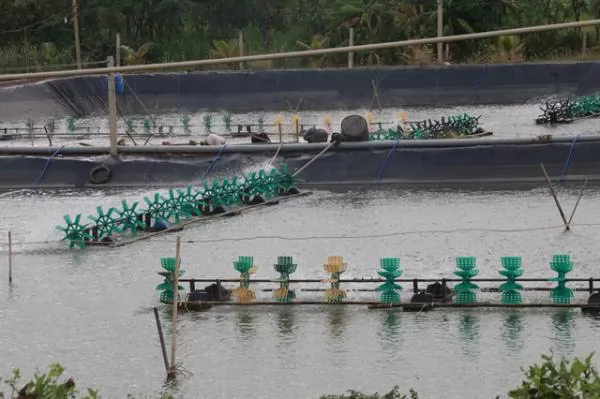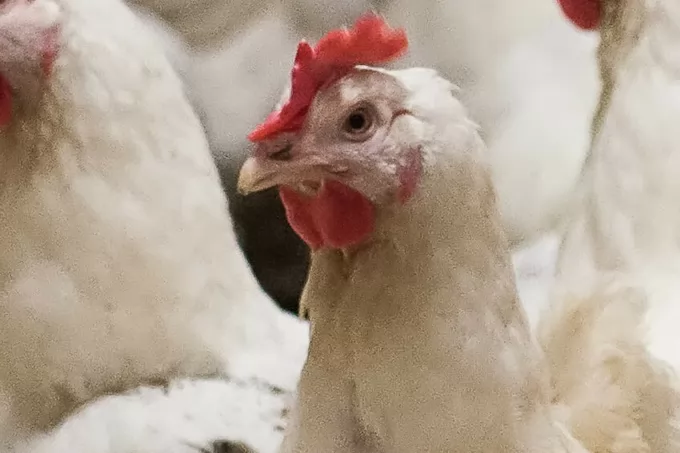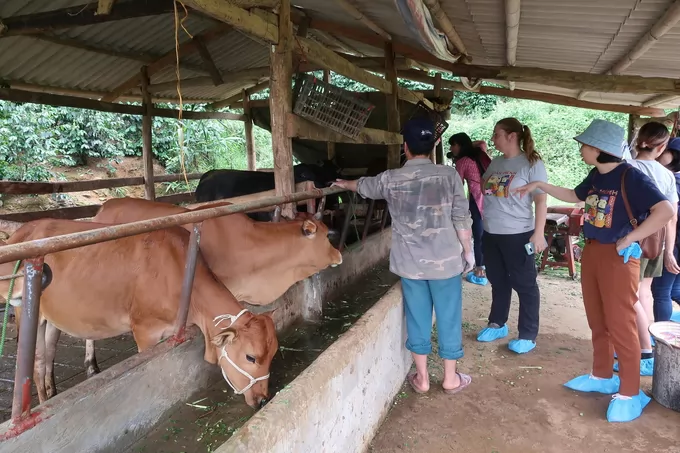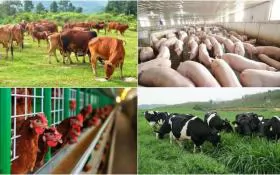Tiền Giang aquaculture area, output edge up

Breeding shrimp in Tiền Giang Province's Gò Công Đông District. - VNA/VNS Photo Minh Trí
TIỀN GIANG – Farmers in the Cửu Long (Mekong) Delta province of Tiền Giang are raising the fry of high - value aquatic species on an area of more than 6,000ha this year, up marginally from last year, according to the province’s Department of Agriculture and Rural Development.
The species include black tiger shrimp, white – legged shrimp, giant river prawn, tra fish, and clam.
The farmers have harvested nearly 11,000 tonnes so far this year for both domestic consumption and processing for exports, also marginally higher than in the same period last year.
With a coastline of 32km and a dense river and canal network, the province has a huge advantage in terms of breeding all kinds of aquatic species, whether saltwater, brackish or freshwater.
It has developed a number of farming models and bred various aquatic species suitable for each area.
In coastal areas in the downstream region of the Tiền River, a tributary of the Mekong, black tiger shrimp and white-legged shrimp are bred.
Tra is bred in islets further upstream on the Tiền River in Cai Lậy and Cái Bè districts.
The province has developed freshwater fish and rice farming areas in Cái Bè District, fish fry areas in Cai Lậy Town and rice – shrimp farming areas in Tân Phú Đông District.
It has established areas for farming fish in floating cages along the Tiền River.
It has a 2,200ha clam farming area on the Tân Thành coast in Gò Công Đông District.
Last year it suffered severe saltwater intrusion in the dry season, but aquaculture was not affected much and most farmers enjoyed high and steady incomes.
The price of tra fish increased to VNĐ22,000 - 24,000 (US$0.9 - 1) per kilogramme in the last few months of last year, up VNĐ3,000 - 4,000 from earlier months.
Farmers are breeding tra fish on around 100ha to supply processors for exports.
Hundreds of farmers along coastal areas in the Cửa Tiểu and Cửa Đại estuaries are breeding shrimp using advanced two-stage and three -stage industrial farming models.
The two-stage model requires various ponds for breeding shrimp and treating water. Juvenile shrimp are first bred in the nursery pond for a few weeks before being transferred to the main pond for intensive breeding.
The shrimp breeding ponds are equipped with oxygenation facilities, anti-sunlight nets and plastic sheets on the bed.
Both models offer a high yield of 40 - 50 tonnes per hectare per crop.
Many farmers have begun breeding new species like crocodiles and fry since they offer high incomes.
The department encourages aquaculture farmers to adopt good agricultural practice (GAP) standards to improve yields and enable traceability.
The province has 76.2ha of aquaculture farms adopting VietGAP or GlobalGAP standards. – VNS
Maybe you are interested

Laying Hen Welfare Forum launches white bird feedback survey
The UK's Laying Hen Welfare Forum has launched a survey to establish the sector's experiences in rearing and managing white bird commercial layers.

SAPLING initiative strengthens biosecure livestock farming techniques in Son La
Up to 90% of farmers participating in the project in Mai Son and Phu Yen districts now have a better understanding of animal diseases and are aware of the importance of vaccinating their livestock.

Collaborate to support low-emission agricultural solutions in the Mekong Delta
ChildFund Korea and ActionAid Vietnam will replicate the biogas model of waste treatment and provide low-emission gas for farming households.





